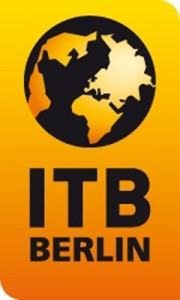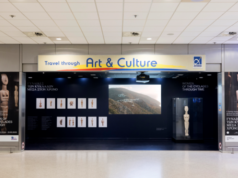 City trips in Europe grow twice as fast as total international holiday market – Paris, London and Berlin are top destinations – ITB Berlin and IPK International analyse why ever more tourists head for Europe’s major cities
City trips in Europe grow twice as fast as total international holiday market – Paris, London and Berlin are top destinations – ITB Berlin and IPK International analyse why ever more tourists head for Europe’s major cities
Paris, London, Berlin: city trips have been one of the boom tourism segments in the last decade. In worldwide terms, no other form of international holiday has grown so quickly in recent years. This global trend also applies for the foreign city trips taken by Europeans. This is the result of a special evaluation of the World Travel Monitor® from IPK International that was commissioned by ITB Berlin.
The figures tell a clear story. In 2014, Europeans made nearly 70 million city trips to international destinations and booked about 400 million overnight stays. Compared to 2007, the number of foreign city trips by Europeans increased by 60 per cent in total, which corresponds to seven per cent per year. This means that in Europe this segment has grown twice as fast as the total market for foreign holidays. Traditional city trips dominate the market with a share of nearly 75 per cent while one quarter of all trips are combined with visits to friends and relatives, and just one per cent are incentive trips for business purposes.
The most popular country destination for foreign city trips by Europeans is Germany. With nearly 10 million guests in 2014, Germany has grown rapidly by 94 per cent in total and by 10 per cent a year, overtaking the previous top destinations of France and Great Britain. This surge could well have been kicked off, for example, by the attractive TV reports from the football World Cup in Germany in 2006. Italy and Spain are also high up the popularity scale for foreign city trips. Austria (in sixth place) has developed positively with its number of city visitors doubling since 2007.
Paris and London compete in the Champions League of city tourism and are by far the most popular individual destinations for Europeans. However, Berlin (in third place) has also left many top European destinations behind it thanks to continuous above-average strong growth. Fourth to tenth in the rankings lie Barcelona, Prague, Amsterdam, Vienna, Rome, Munich and New York.
City trips are in season throughout the year. Compared to 2007, when two thirds of all city trips were taken during the summer months, only 52 per cent of trips are now made during the summer while 48 per cent are in the winter half-year. The most popular travelling months (in descending order) are August, just ahead of May, April and December.
City visitors take shorter trips and have money to spend
Short trips are a major trend, and many of them lead to city destinations. Since 2007, the average length of a foreign city trip has continuously declined. The share of short trips lasting 1-3 nights comes to over 40 per cent and is rising steadily. The increase is nearly twice as high as that for longer city trips.
Private accommodation has become a popular alternative to hotels. Despite rising booking figures, hotels have experienced a falling share of the overall accommodation market for years. Two thirds of city visitors still book hotel accommodation. But online portals offering local hosts, such as Airbnb or Wimdu, have experienced a real boom and are the new growth drivers. Within the hotel segment, the trend is for stronger growth the higher the hotel category is. In contrast, the budget segment has slightly declined.
City trips continue to be mostly an activity for well-off Europeans. According to the World Travel Monitor®, four fifths of city tourists belong to higher income and better-educated social classes. In 2014, the average spending per person on a foreign city trip totalled more than 700 euros, which came to about 130 euros per night. These figures include all costs, including transportation, etc.
Dr. Martin Buck, Messe Berlin’s Director of Travel & Logistics, comments: “Both German and foreign cities have become much more attractive in recent years. Better-looking city centres, new shopping centres and above all a diverse entertainment programme are drawing visitors from many countries. For most visitors, it’s a question of escaping from everyday routine for a few days. The trend to short trips demonstrates this. A city is an ideal destination for this purpose. You have everything you need, such as museums, exhibitions, concerts, musicals, restaurants and shopping.”
The survey results cover foreign city trips by Europeans as long as the visitors have spent at least one night in a foreign city on the trip and have defined the trip in the survey as a city trip; in other words, not a business trip, a family visit without a holiday or a city trip for health reasons, etc. All the trend figures refer to developments in the eight travel years from 2007 to 2014.
Alongside special evaluations of IPK International’s World Travel Monitor®, ITB Berlin will also publish the core data of the World Travel Monitor®, including the assessments of some 50 tourism experts from more than 20 countries, in the ITB World Travel Trends Report 2015/16 in early December. The final results of the World Travel Monitor® for the entire year, as well as the latest forecasts for 2016, will be presented by Rolf Freitag, president of IPK International, at the ITB Future Day during the ITB Berlin Convention. The World Travel Monitor® is based on the findings of representative interviews carried out every year with more than 500,000 people in over 60 travel markets worldwide. It has been conducted regularly for more than 20 years and is recognised as the largest continuous survey examining global travel trends.











